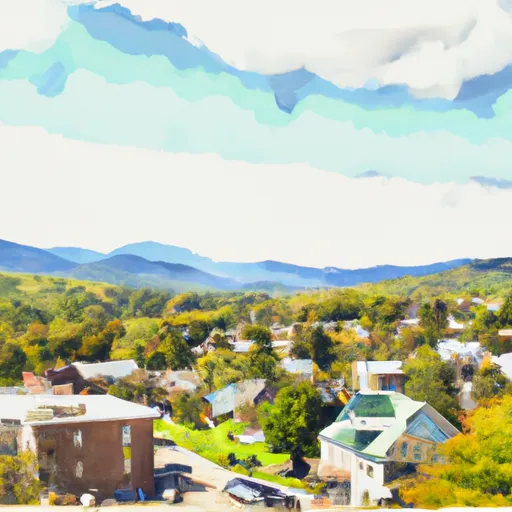-
 Snoflo Premium
Snoflo Premium
Get unlimited access to all our content
With no Ad interruptions! - Start Your Free Trial Login with existing account
Stowe
Eden Index
Climate
7.3
•
Recreation
4.4
•
Community
2.0
•
Safeguard
4.9/10

Stowe, Vermont, located in the New England region of the United States, offers a diverse climate and an abundance of outdoor recreational opportunities. The town experiences a humid continental climate, characterized by warm summers and cold winters. Average temperatures range from 20°F (-6°C) in winter to 80°F (27°C) in summer.
Stowe benefits from its hydrological constituents, thanks to the Lamoille River and various nearby lakes and ponds. These water bodies provide opportunities for fishing, boating, and swimming during the warmer months. Additionally, the area's snowmelt and precipitation contribute to the picturesque landscapes and scenic waterfalls that can be explored throughout the region.
Outdoor enthusiasts can take advantage of Stowe's numerous recreational activities. The town is renowned for its skiing and snowboarding opportunities, with the Stowe Mountain Resort offering excellent slopes and trails for all skill levels. The surrounding mountains also provide great hiking and mountain biking trails during the summer and fall seasons. Other popular activities include golfing, horseback riding, and zip-lining, all amidst breathtaking natural scenery.
Overall, Stowe, Vermont, offers a delightful climate, abundant water resources, and a wide range of outdoor activities, making it an appealing destination for nature lovers and adventure seekers.
What is the Eden Index?
The Snoflo Eden Index serves as a comprehensive rating system for regions, evaluating their desirability through a holistic assessment of climate health, outdoor recreation opportunities, and natural disaster risk, acknowledging the profound impact of these factors on livability and well-being.
Climate Health Indicator (CHI): 7.3
Stowe receives approximately
1123mm of rain per year,
with humidity levels near 79%
and air temperatures averaging around
6°C.
Stowe has a plant hardyness factor of
4, meaning
plants and agriculture in this region thrive during a short period during spring and early summer. Most
plants will die off during the colder winter months.
By considering the ideal temperature range, reliable water supplies, clean air, and stable seasonal rain or snowpacks, the Climate Health Indicator (CHI) underscores the significance of a healthy climate as the foundation for quality living.
A healthy climate is paramount for ensuring a high quality of life and livability in a region, fostering both physical well-being and environmental harmony. This can be characterized by ideal temperatures, reliable access to water supplies, clean air, and consistent seasonal rain or snowpacks.
Weather Forecast
Streamflow Conditions
Richelieu
Area Rivers
Richelieu
Snowpack Depths
Richelieu
Reservoir Storage Capacity
Richelieu
Groundwater Levels
Recreational Opportunity Index (ROI): 4.4
The Recreational Opportunity Index (ROI) recognizes the value of outdoor recreational options, such as parks, hiking trails, camping sites, and fishing spots, while acknowledging that climate plays a pivotal role in ensuring the comfort and consistency of these experiences.
Access to outdoor recreational opportunities, encompassing activities such as parks, hiking, camping, and fishing, is crucial for overall well-being, and the climate plays a pivotal role in enabling and enhancing these experiences, ensuring that individuals can engage in nature-based activities comfortably and consistently.
Camping Areas
| Campground | Campsites | Reservations | Toilets | Showers | Elevation |
|---|---|---|---|---|---|
| Allis State Park | 26 | 1,875 ft | |||
| Chittenden Brook | 17 | 1,844 ft | |||
| Little River State Park | 100 | 731 ft | |||
| Elmore State Park | None | 1,637 ft | |||
| Underhill State Park | None | 1,969 ft | |||
| Eden Rec Area | None | 1,251 ft | |||
| Smugglers Notch State Park | 34 | 1,934 ft | |||
| Carmi State Park | None | 493 ft |
Nearby Ski Areas
Catastrophe Safeguard Index (CSI):
The Catastrophe Safeguard Index (CSI) recognizes that natural disaster risk, encompassing floods, fires, hurricanes, and tornadoes, can drastically affect safety and the overall appeal of an area.
The level of natural disaster risk in a region significantly affects safety and the overall livability, with climate change amplifying these risks by potentially increasing the frequency and intensity of events like floods, fires, hurricanes, and tornadoes, thereby posing substantial challenges to community resilience and well-being.
Community Resilience Indicator (CRI): 2.0
The Community Resilience Indicator (CRI) recognizes that education, healthcare, and socioeconomics are crucial to the well-being of a region. The CRI acknowledges the profound impact of these elements on residents' overall quality of life. By evaluating educational resources, healthcare accessibility, and economic inclusivity, the index captures the essential aspects that contribute to a thriving community, fostering resident satisfaction, equity, and social cohesion.

